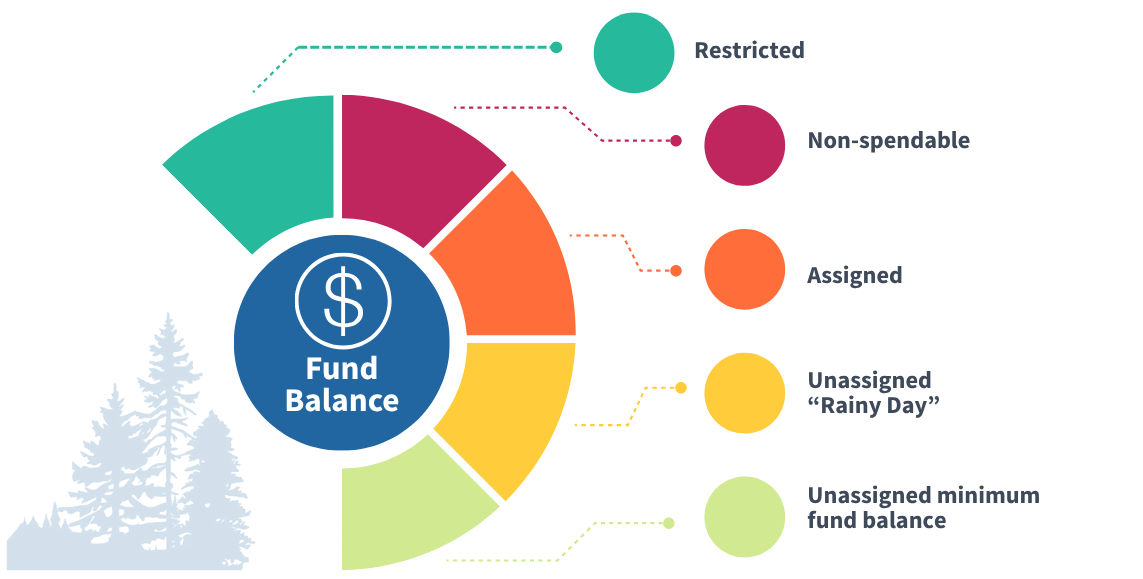Fund balance
What is a fund balance?
The fund balance is the amount of money left over after all revenue has been received and expenses have been paid. Some funds are restricted or designated as nonspendable; others are assigned to specific purposes. Fund balance amounts can change over time, reflecting years of higher revenues or higher expenditures. Some of the factors include:
Enrollment fluctuations
Educational programs relying on local levy funding
Financial impacts of unfunded state mandates
Levies passing or failing
Financial impacts of labor agreements
Energy cost increases and weather-related damages
Litigation
Loss of state and federal grants
Maintaining sufficient cash flow to meet district obligations
Acts of God
How does BGPS use its fund balance?
The fund balance has several components. Some of the money in the fund balance is restricted or designated as nonspendable. Restricted and nonspendable money can’t be used to balance the budget.
Restricted: Includes carryover of restricted revenues from previous years that must be spent for specific programs and money that is restricted for uninsured risks.
Nonspendable: Includes prepaid insurance expenses; prepaid curricula; and inventory, such as classroom and office supplies.
Assigned: Includes operations, facility improvements, supplies, technology, communication and more. Some of the assigned money is discretionary and some has been committed to specific purposes.
Unassigned, or so-called rainy day funds: Money remaining after identification of the restricted, nonspendable and assigned funds.
Unassigned minimum fund balance: Policy 6022 requires the district to maintain an unassigned fund balance of 4-6%. This amount represents about two months of payroll expenditures, or less than one month of total expenditures. It also is an indicator of sound financial health. Having a healthy unassigned fund balance affects the district’s creditworthiness for selling bonds at a good interest rate to build new schools, cash flow while waiting for revenue collection, program stability and response to unforeseen accidents and natural events, among other things.

